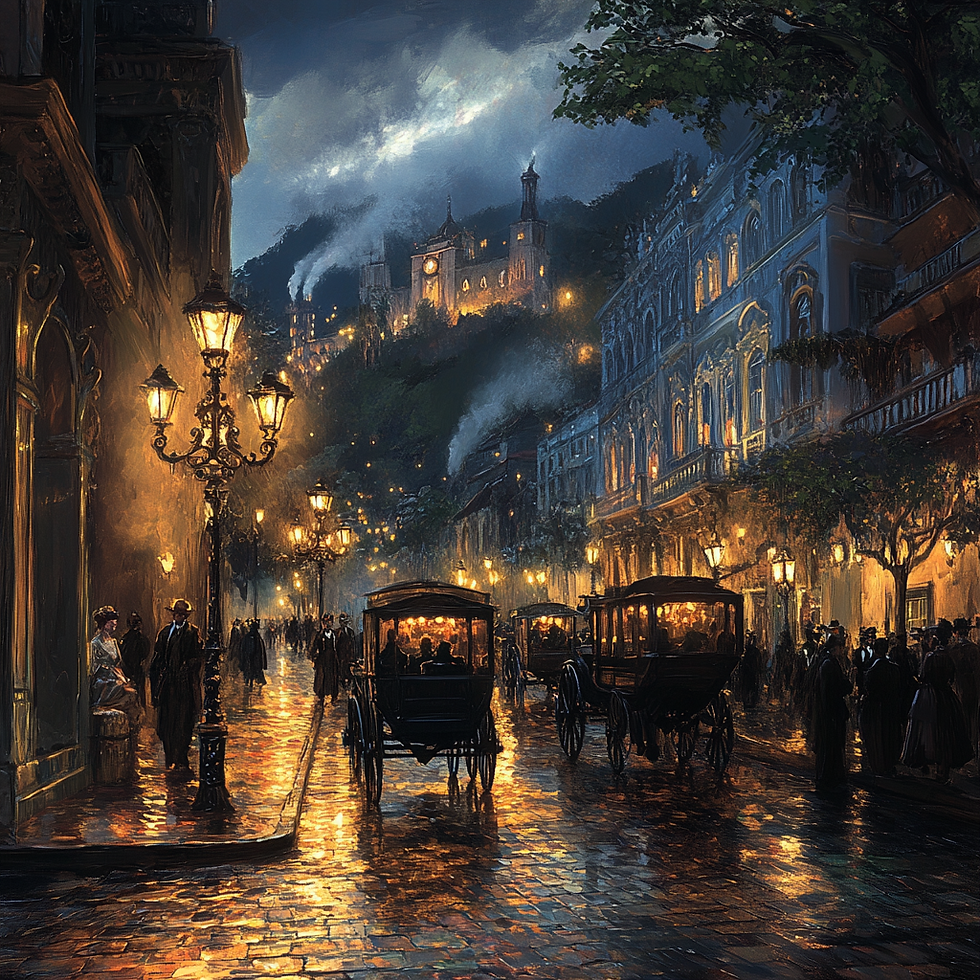The Gaslight Revolution: How Rio de Janeiro Lit Up in 1854
- Sidney Klock
- Mar 25
- 2 min read
On March 25, 1854, Rio de Janeiro entered the modern age — not by decree, but by illumination. At precisely 6 p.m., gas streetlights were lit for the first time along Rua do Ouvidor, turning darkness into spectacle and paving the way for a new urban rhythm. It was more than just light; it was a declaration of technological and civilizational ambition, transforming not only the night but the entire sensory experience of the city.

This transformation was orchestrated by The Rio de Janeiro Gas Company, a British-owned enterprise granted concessions by Brazil’s imperial government. Choosing Rua do Ouvidor was symbolic — the street was a social artery of the Empire, where merchants, politicians, and thinkers walked. Lighting it was a way of asserting order, culture, and authority. The lamp posts did not just cast light — they cast surveillance. Public illumination became a tool of urban governance.
The gaslight era also redefined nightlife. Cafés and bookstores extended their hours, and theaters embraced the illuminated evening. The concept of the flâneur — the urban wanderer — emerged in Rio, echoing similar developments in Paris. The city became a canvas for nighttime exploration, at least for the privileged classes. However, this modern glow didn't reach the outskirts, where many still lived in darkness — a metaphor that still resonates in today's discussions on urban inequality.
Gas lighting introduced a new visual regime: the city as performance. Buildings, streets, and squares became more than functional spaces — they became scenes. Artists, writers, and urban planners were all influenced by this shift in perception. Light was not just about seeing; it was about framing the world. It introduced a new language — one that shaped how the city was imagined, controlled, and inhabited.
Today, as we design smart cities and debate surveillance ethics, Rio’s first gaslights remind us that every beam of progress casts shadows. The 1854 lighting event was not just technical innovation — it was cultural reprogramming. And its glow still lingers in the architecture of our cities and our dreams.
🔦 Curiosity
The first night of gaslight illumination in Rio was a public celebration. A band played, crowds gathered, and many people gasped in awe — most had never seen light that wasn’t fire-based.
📚 References
Brazilian Historical and Geographical Institute (IHGB)
Energy Museum of São Paulo
Rio de Janeiro Municipal Department of Culture
Ferreira, Jorge. A Cidade Iluminada. UFRJ, 2009.
National Institute of Historic and Artistic Heritage (IPHAN)



Comments